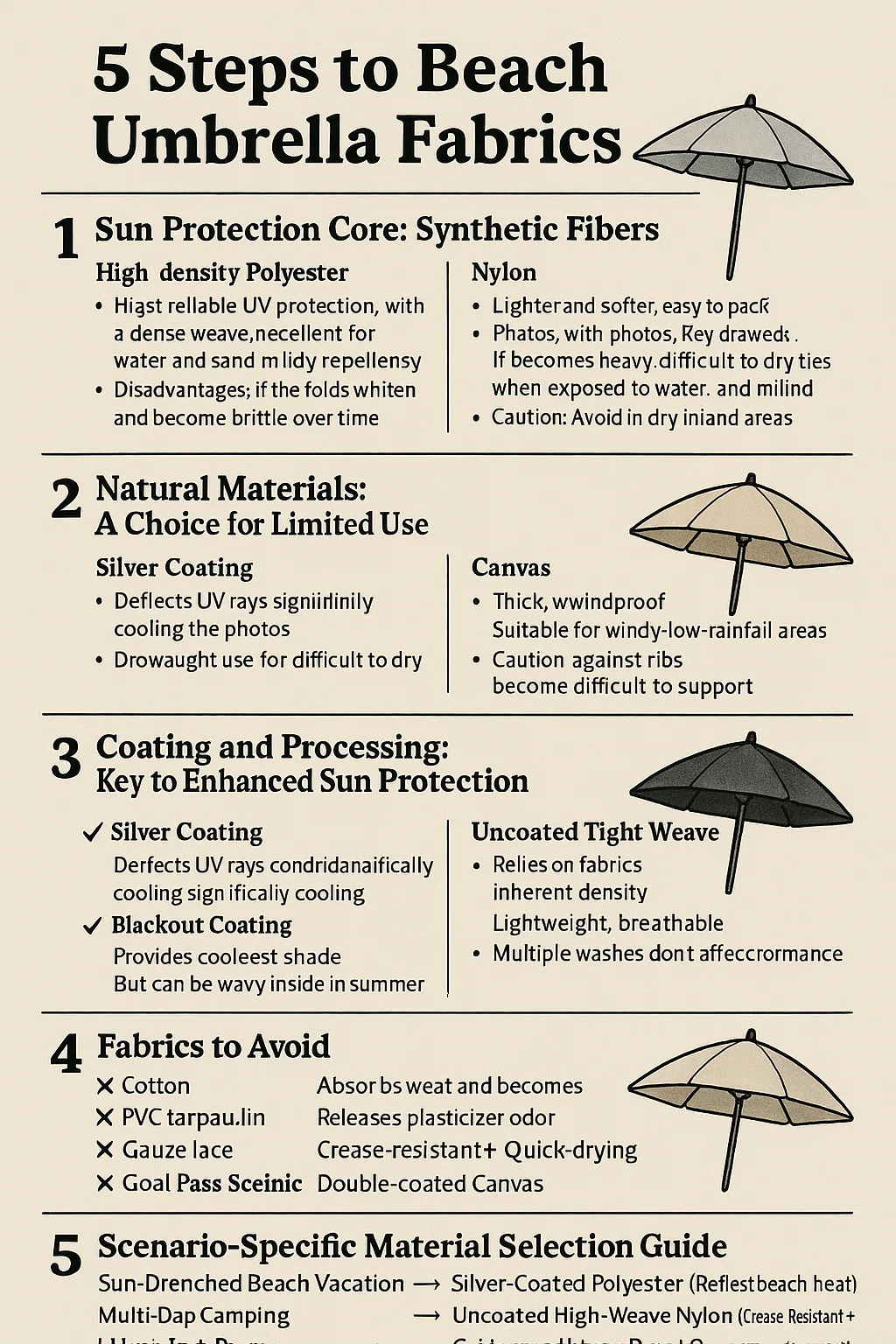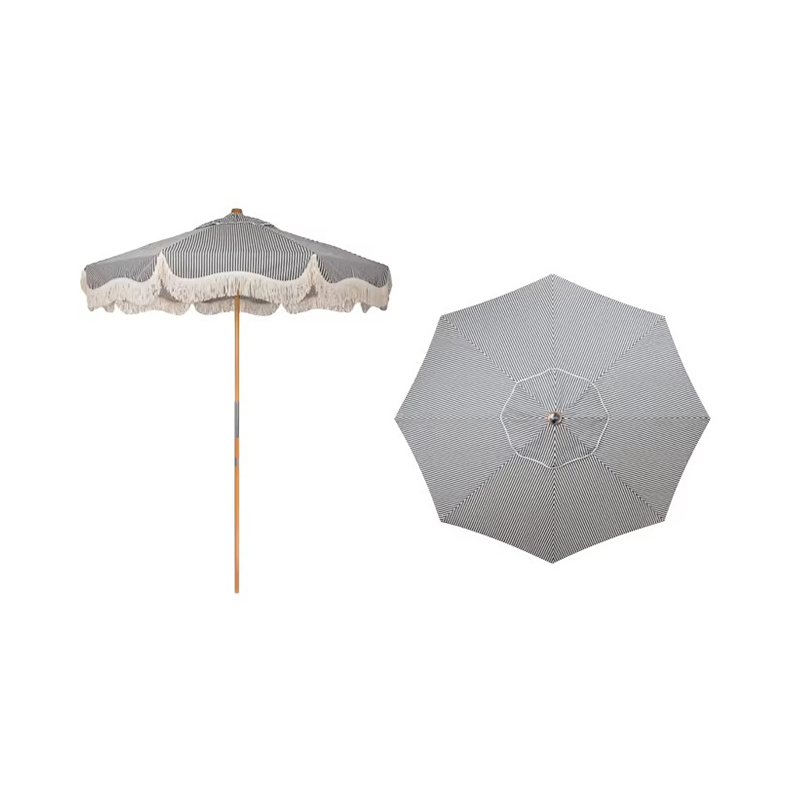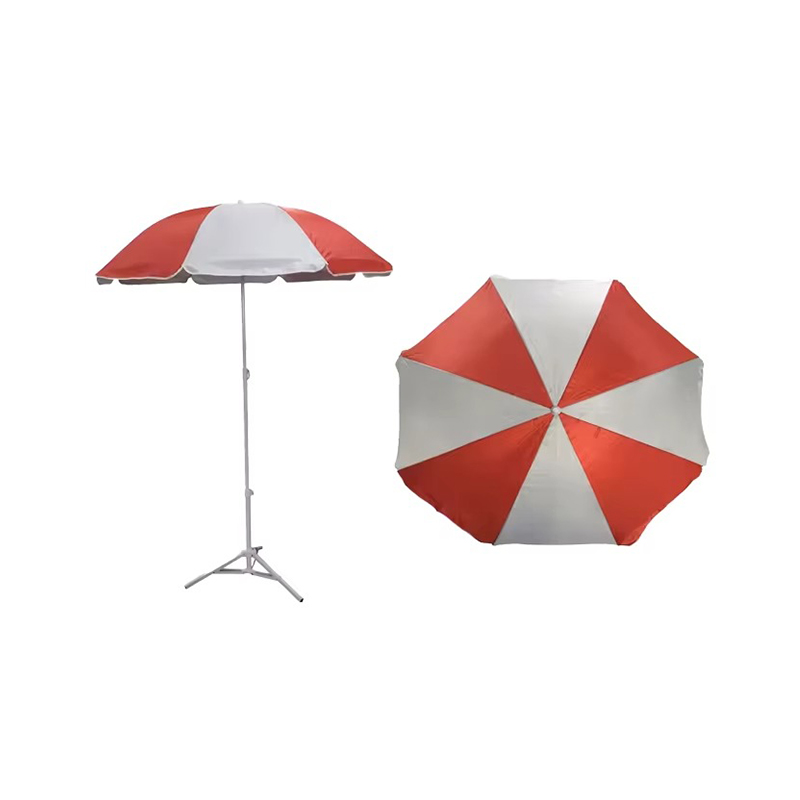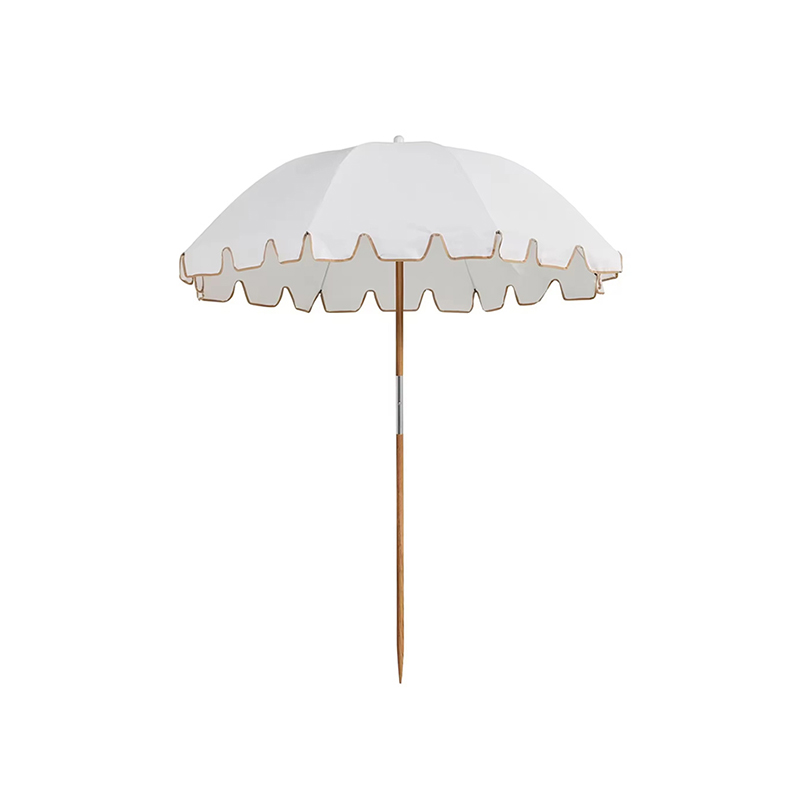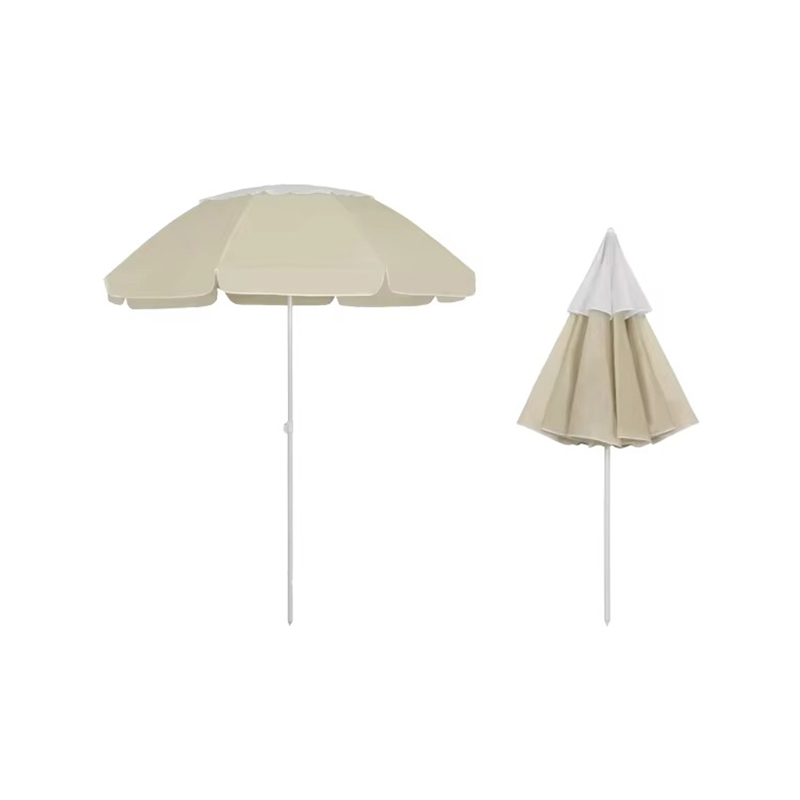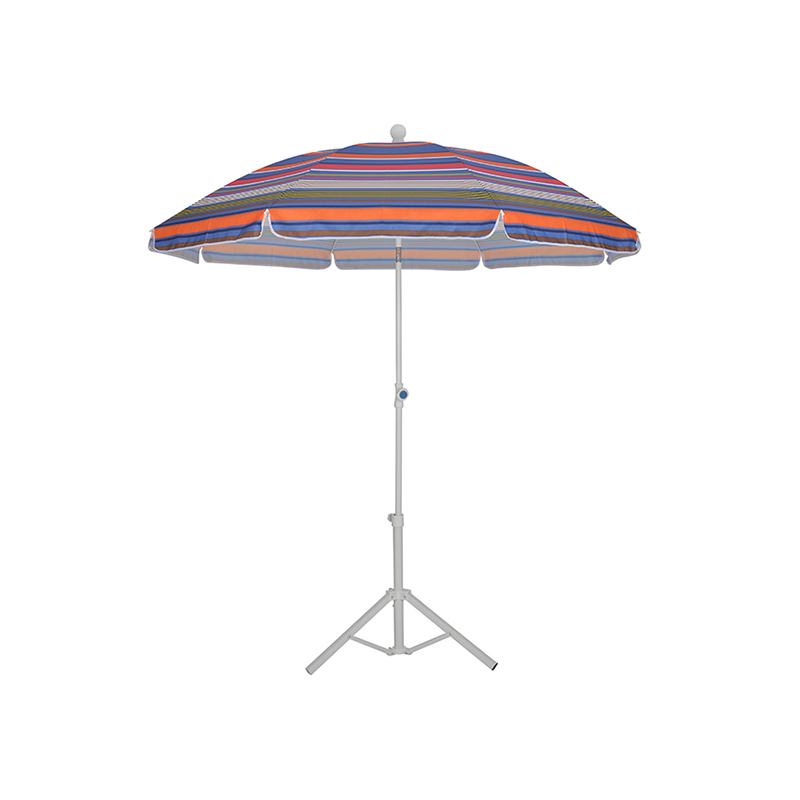What is the best fabric for a beach umbrella?
Posted by Admin
The key to choosing a beach umbrella fabric is to balance sun protection, durability, comfort, and environmental adaptability.
**1. Sun Protection Core: Synthetic Fibers
High-density polyester: The most reliable UV protection, with a dense weave (pinholes are difficult to see when light is through), and excellent water and sand repellency. Choose this for year-round exposure to the sun at the beach. Disadvantages: The folds tend to whiten and become brittle after prolonged use, so avoid hard folding when storing.
Nylon: Lighter and softer than polyester, it's easy to fold and pack, making it ideal for backpackers. It dries quickly and doesn't retain water even in the occasional rain. Disadvantages: The sun protection relies on a coating that can easily peel off due to friction (beware of cheap, paper-thin models).
**2. Natural Materials: A Choice for Limited Use
Cotton-Linen Blend: Breathable and non-stuffy, it's a great choice for park picnics. The light colors and natural lighting are ideal for photos. Key drawbacks: It becomes heavy and difficult to dry when exposed to water, and is prone to mold and mildew in the high humidity of the beach. Use only in dry inland areas. Canvas: Thick and windproof, suitable for windy, low-rainfall areas (such as desert camping). Use with caution: Wet beaches absorb moisture, making the ribs difficult to support.
**3. Coating and Processing: Key to Enhanced Sun Protection
Silver Coating: The silver reflective coating on the outside of the umbrella directly deflects UV rays, significantly cooling the body. Pitfall: Sun protection is drastically reduced if the coating cracks—opt for a textured, reinforced model (such as embossed plaid).
Blackout Coating: Provides the coolest shade under the umbrella, but can be a bit shaky inside at noon in summer. A double-sided design (light outside, black inside) is recommended.
Uncoated Tight Weave: Relying on the fabric's inherent density for sun protection, it's lightweight and breathable. Multiple washes don't affect performance, making it suitable for those who prefer coatings that don't peel.
**4. Fabrics to Avoid
Cotton: Absorbs sweat and becomes like heavy armor, making the ribs prone to breaking in wind. PVC tarpaulin: Releases plasticizer odor under scorching sun, causing sweltering and toxic heat.
Gauze lace: Suitable for umbrella trimming, but impervious to UV rays as the main fabric.
**5. Scenario-Specific Material Selection Guide
Sun-Drenched Beach Vacation → Silver-Coated Polyester (Reflects beach heat)
Multi-Day Camping → Uncoated High-Weave Nylon (Creat-Resistant + Quick-Drying)
Urban Park Picnic → Cotton and Linen Blend (Breathable and Beautiful)
Gaol Pass Scenic Viewing → Double-Coated Canvas (Stable and Tear-Resistant)
| Fabric Type | Best For | Top Advantage | Watchouts | Durability Hack |
| Polyester (Dense Weave) | Beach resorts, intense sun | Blocks UV without heavy coatings; sand slides off | Stiffens over time; avoid sharp folds | Store loosely rolled; rinse salt after use |
| Nylon (Ripstop) | Backpacking, frequent moves | Lightweight packs small; dries in <10 mins | Wears thin at stress points; coating rubs off | Patch tears early with tenacious tape |
| Silver-Coated Polyester | Desert/reflective sand | Reflects heat; cooler shade | Coating cracks after 2-3 seasons; noisy in wind | Choose diamond-quilted coating (resists flaking) |
| Black-Coated Polyester | Sensitive skin/users | Maximum UV block; dark = less glare | Traps heat; avoid in humid climates | Pick dual-layer: white outer + black inner |
| Cotton-Linen Blend | Urban parks, short picnics | Breathable; aesthetic earthy look | Mildews if damp; sags when humid | Sun-dry fully before packing |
| Canvas | Windy coastal cliffs | Heavy = stable; blocks wind chill | Soaks water like sponge; pole strain | Treat with waterproof wax annually |
